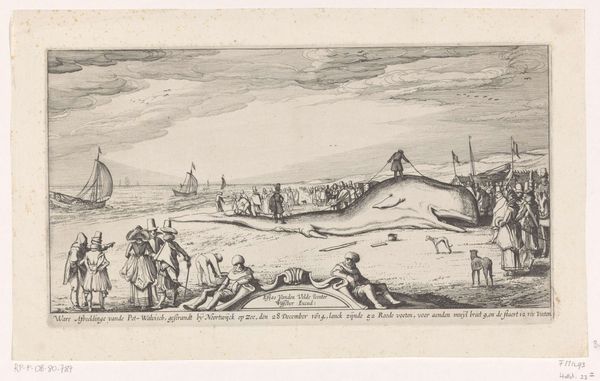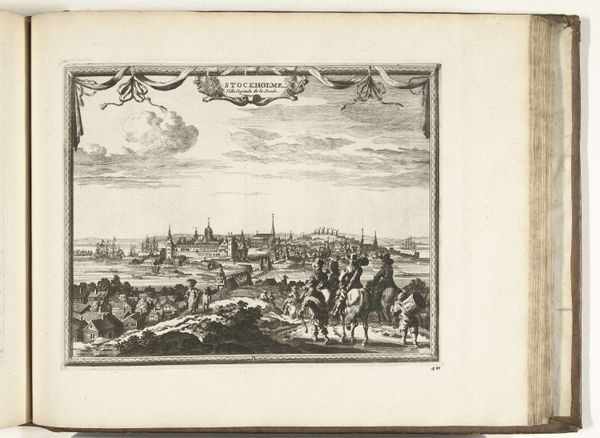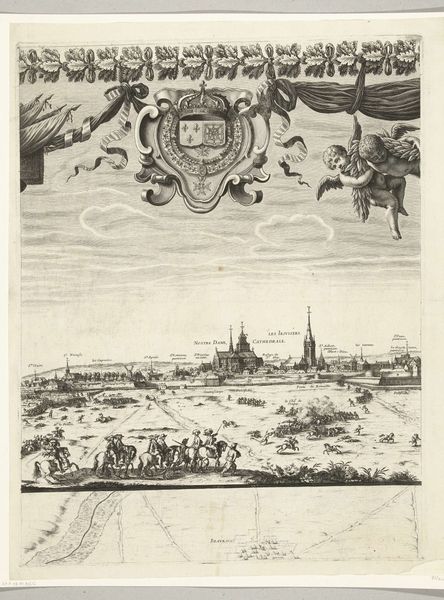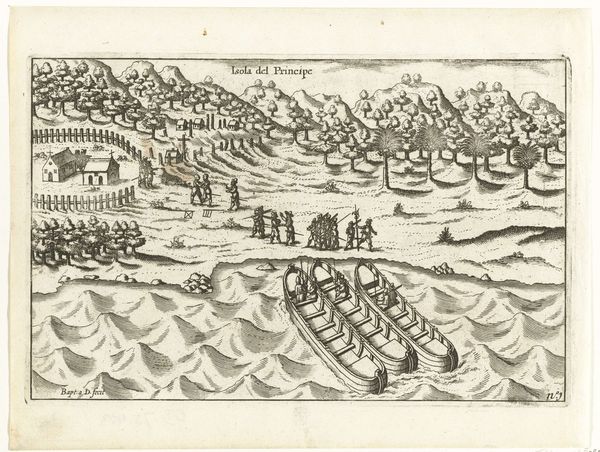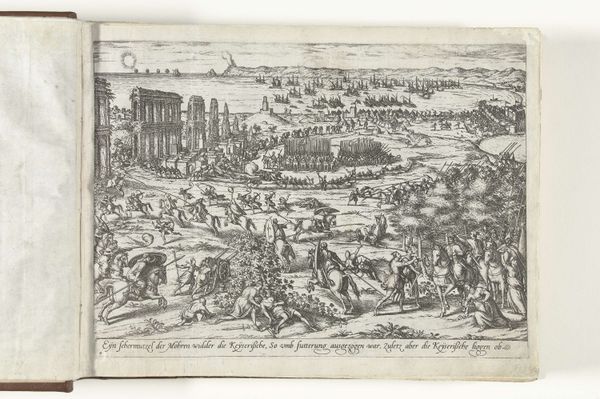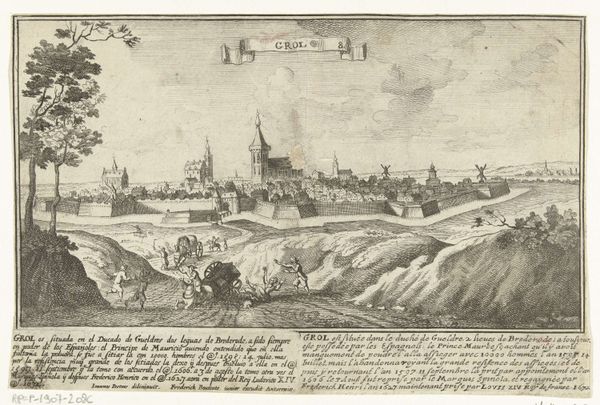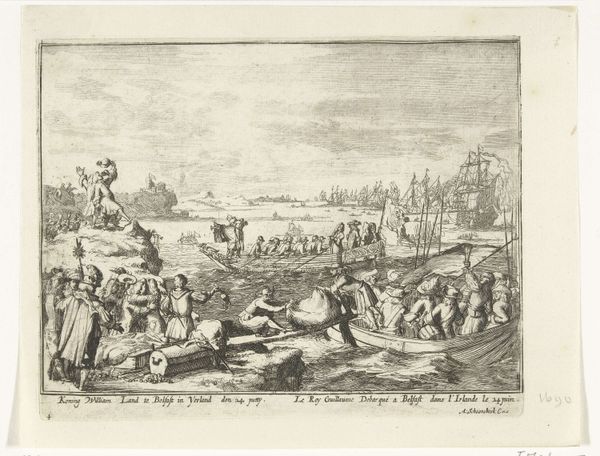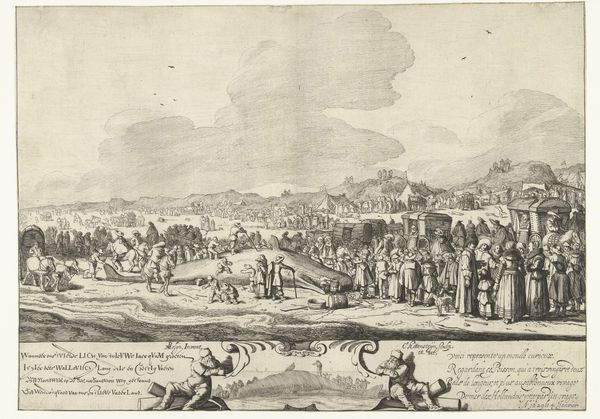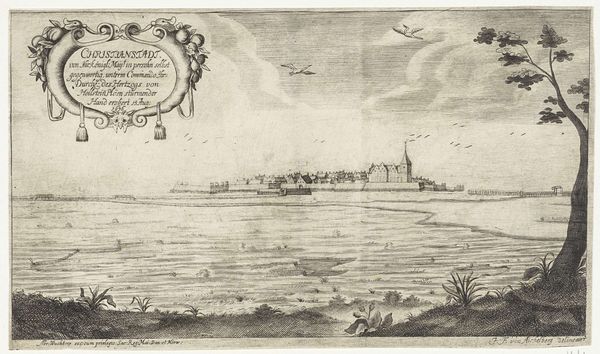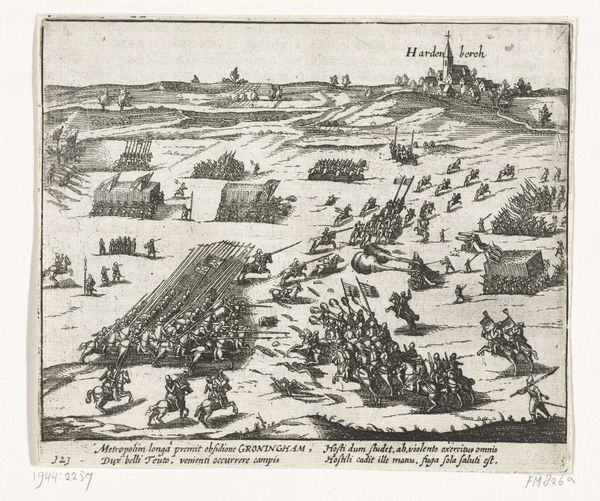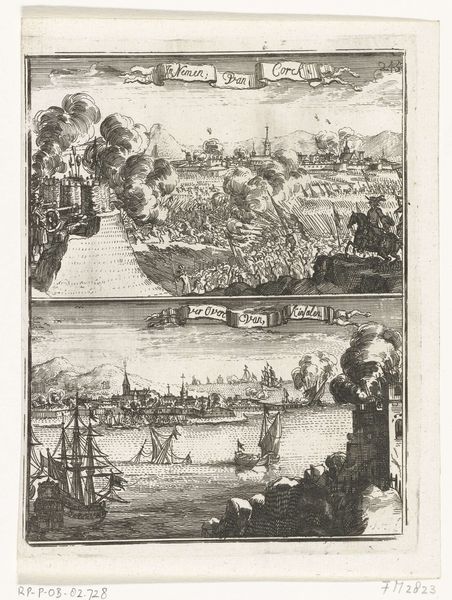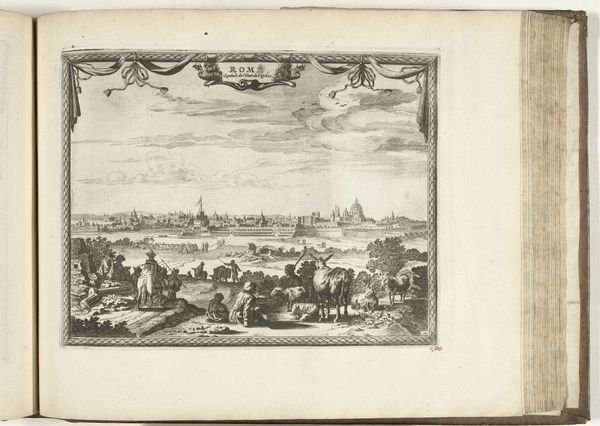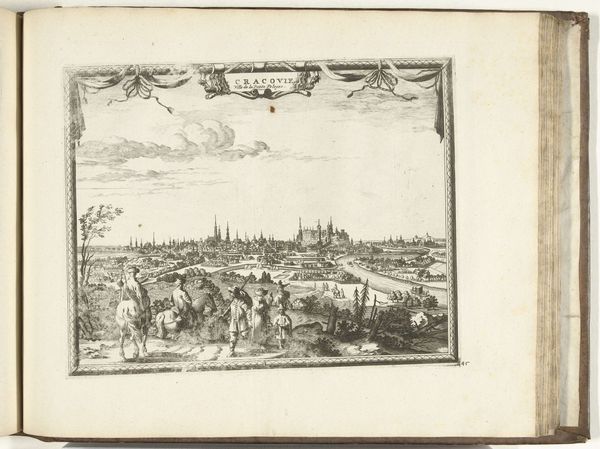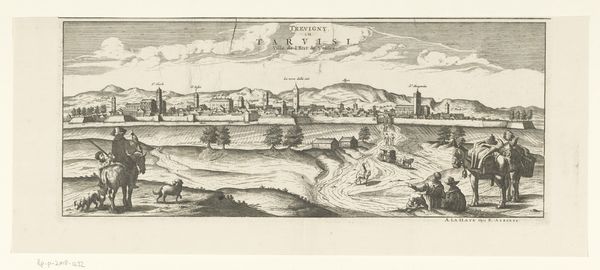
Illustratie voor 'Den Arbeid van Mars' van Allain Manesson Mallet 1672
0:00
0:00
romeyndehooghe
Rijksmuseum
print, engraving
#
baroque
# print
#
landscape
#
line
#
cityscape
#
history-painting
#
engraving
Dimensions: height 185 mm, width 110 mm
Copyright: Rijks Museum: Open Domain
Curator: The artwork before us is an engraving entitled "Illustratie voor 'Den Arbeid van Mars' van Allain Manesson Mallet," created in 1672 by Romeyn de Hooghe. It's currently held in the Rijksmuseum. Editor: My initial impression is one of controlled chaos. The city looms serenely in the background, but the foreground seethes with implied action and a sense of impending conflict. The line work, though meticulous, somehow contributes to this feeling of unrest. Curator: Indeed. De Hooghe, a figure deeply embedded in the political and social currents of his time, likely intended to convey that dual perspective. As an illustrator, his role was often to depict current events but through a lens that reinforced existing power structures. This work, specifically created as an illustration, underscores the close relationship between warfare, labor, and geographical power in the 17th century. Editor: So, the labor of Mars isn’t just about military conquest, but also the labor expended to even facilitate war itself – the supply lines, the manpower, the resources? The river seems almost like a border, teeming with movement in one place, almost eerily quiet in another. What message do you think De Hooghe might be making here about this society? Curator: Precisely! We should examine the city's placement, elevated and fortified, contrasting sharply with the muddied activity below. De Hooghe might be reflecting on the privilege derived from war, highlighting a deep social divide. Those within the city’s walls are benefitting from the hardship endured by those caught in its wake. Who bears the burden of Mars’ labor? That’s the question. Editor: The way he uses line to depict the water feels significant. The sharp, etched lines convey tension; even the 'calm' water surrounding the fortress appears guarded. There's a sense of artificial separation, not just a physical one, between those on either side of the river. What about its reception? How would it be viewed then versus how it may be viewed now? Curator: Well, viewed through a modern lens, the engraving’s composition speaks volumes about access, and perhaps, the cost of stability that's gained for some by the sacrifice of many others. In its time, it may have been lauded as an accurate or even propagandistic portrayal. Now, we can hopefully deconstruct its inherent biases and discuss a wider, critical meaning of war in societies that value control over humanity. Editor: It's fascinating how a relatively small print like this can reveal such layered complexities when viewed through these lenses. It invites critical questions about societal structures. Curator: Exactly, this piece reminds us to always question the narrative, the implied values embedded in even seemingly straightforward historical depictions of military labor, power and control.
Comments
No comments
Be the first to comment and join the conversation on the ultimate creative platform.
